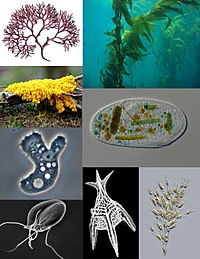
Photo from wikipedia
Abstract The activity and composition of soil microbial communities during natural restoration have been widely studied, but their succession rates and metabolic functions remain unknown, especially with respect to soil… Click to show full abstract
Abstract The activity and composition of soil microbial communities during natural restoration have been widely studied, but their succession rates and metabolic functions remain unknown, especially with respect to soil depth. Here, we examined a chronosequence of grasslands that were subjected to grazing exclusion for 0, 10, 15, 25, and 35 years (y) on the semiarid Chinese Loess Plateau, and we investigated the succession rate and the metabolic functions of microbial communities at different soil layers (0–10, 10–20, 20–40, and 40–60 cm). Microbial succession rates represented by temporary turnover were assessed using the slope of linear regressions, based on log-transformed microbial community similarity over time. Metagenome functional content was predicted from the sequence data using PICRUSt. Most soil physicochemical properties, microbial biomass, enzyme activity, bacterial diversity, and carbohydrate and amino acid metabolism increased as a result of grazing exclusion but decreased as a function of soil depth. Bacterial communities showed a transition from fast-growing copiotrophic taxa (Proteobacteria) to slow-growing oligotrophic taxa (Actinobacteria) with soil depth. Notably, a higher temporary turnover rate of bacterial communities in the topsoil than in the subsoil layer indicated a decreased successional rate of bacterial communities along the soil depth profile. Nitrospirae had the highest succession rate, followed by Gemmatimonadetes, Actinobacteria, Proteobacteria, and Bacteroidetes. Variance partitioning and redundancy analysis demonstrated that soil physico-chemical properties had a greater effect on bacterial composition and metabolic functions than plant characteristics (aboveground and root biomasses), and that soil C and N levels and bulk density were the most influential factors. Our study indicated a positive effect of long-term grazing exclusion on the activities, diversity, and functions of the microbial community, and revealed a decreasing successional rate of bacterial communities with soil depth.
Journal Title: Geoderma
Year Published: 2019
Link to full text (if available)
Share on Social Media: Sign Up to like & get
recommendations!